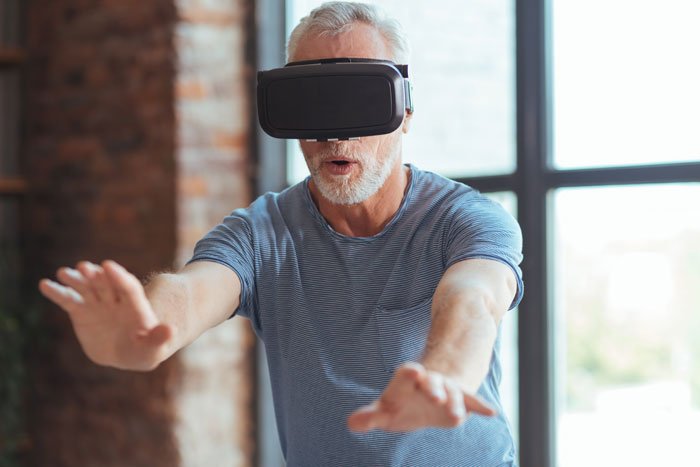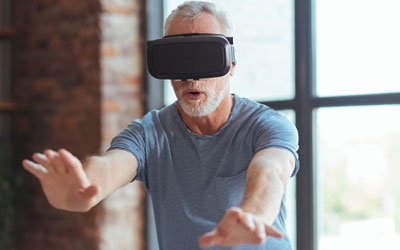Balance problems become increasingly more common as we age, and unfortunately come with additional risks as older people are less resilient to any damage that may occur.
Balance problems can also be a side effect of many other conditions, such as labyrinthitis, dementia and Parkinson’s disease.
While there are tips that can help you improve your balance, if you have serious balance problems it can be wise to visit a physical therapist.
Innovative ways to treat balance problems are needed, as well as ones that can produce greater results for those who undertake treatment. One of the newest methods that physical therapists are using to treat balance problems is through the use of virtual reality (VR) headsets.

How does VR treatment for balance problems work?
When using VR to treat balance problems, participants wear the VR headset and stand on a moving platform – similar to a treadmill. However, this moving platform can move in a 360-degree fashion, allowing it to be in sync with the images that are projected on the headset.
With the headsets on, participants will be on a road which they are asked to walk down. However, there will be certain parts of the road that will be bumpy, or tilt. The moving platform is able to mimic this terrain shift, in order to challenge the participant’s balance.
By using this technique, participants have seen a dramatic shift in their ability to balance.
How is VR treatment different from normal?
Traditional exercise programs to treat balance issues involve similar techniques, but not quite as in depth. Conventional physical therapists will encourage participants to balance on an uneven surface, an unstable base or even throw balls from different directions and encourage them to try and catch these balls.
This might not sound that dissimilar, but the results were vastly different.
In a study conducted in the Netherlands and published in the Journal of NeuroEngineering and Rehabilitation, participants with multiple sclerosis were divided into two groups. One group undertook the new VR-based therapy, whilst the other group did the conventional balance therapy.
Whilst both groups improved their balance abilities, the group that did the VR-based therapy had significantly better improvements. They even reported that they had a smaller fear of falls compared to patients in the conventional group.
What effects has it had?
Many other studies have found similar results, with VR-based therapies having shown to be drastically more effective at treating balance problems than traditional therapies.
One study that was conducted in Canada and published in Hindawi found that participants suffering from vertigo-based symptoms, who undertook a VR-based rehabilitation of their symptoms, had an average decrease of 27 points on the Dizziness Handicap Inventory.
To put that in perspective, the DHI only goes up to 100, so an average decrease of 27 points means that their symptoms were reduced by at more than a quarter.
Using VR for more kinds of treatment
However, the use of VR as a treatment method can actually address a lot of issues, at various complexity levels. Although many will focus on the benefits that VR-based therapy can have on the motor aspects of balance, VR can also aid in visual and cognitive function in rehabilitation.
VR integrates both the visual system and movement, as well as facilitating hand/eye coordination, left/right discrimination, and visual concentration.
The applications of VR-based therapies are almost limitless and stretch across multiple disciplines.
We’re sure that in the future, we’ll see more of this type of therapy being used.






